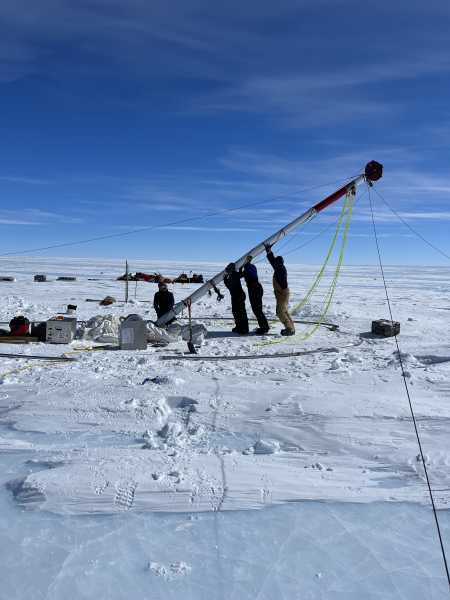
The study found that a hidden layer beneath the Phlegraean Fields could shed light on periods of activity that scientists have observed over the past two decades. (Image credit: Vincenzo Izzo via Getty Images)
New evidence shows that a weak layer of the earth's crust, located at considerable depth beneath the Phlegraean Fields in Italy, is causing seismic activity in the caldera.
The layer is located at a depth of 1.8 to 2.5 miles (3 to 4 kilometers), according to a recent study published April 5 in the journal AGU Advances. It is made of a type of rock known as tuff that has been weakened by multiple igneous intrusions over tens of thousands of years.
The tuff, a lightweight rock formed from compacted volcanic ash, acts as a sponge for volcanic gases rising from a magma chamber located at least 7.5 miles (12 kilometers) below the surface. When these gases begin to fill the pores in the tuff, it causes the rock to deform and even fracture, triggering earthquakes. The discovery could explain why Campi Flegrei experiences regular periods of activity, said lead researcher Lucia Pappalardo, a senior researcher at Italy’s National Institute of Geophysics and Volcanology (INGV).
You may like
- Scientists Discover 'Breathing' Magma Cap Inside Yellowstone Supervolcano
- Mystery of Bolivia's 'zombie' volcano finally solved
- New Evidence of Giant Superplume Tearing Africa Apart
“Other calderas around the world also exhibit similar phenomena,” Pappalardo told Live Science, “and we believe our model can be applied to different calderas on the planet.”
The study is part of a larger project aimed at improving forecasts of eruptions in the Campi Flegrei, also known as the Phlegraean Fields, located west of Naples. According to Italy's Civil Protection Department, approximately 500,000 people live in an area that could be inundated by boiling pyroclastic flows and hot gases if the caldera erupts.
Campi Flegrei has been active for at least 47,000 years, with its last eruption occurring in 1538. However, the caldera has experienced periods of significant activity, one of which has been ongoing since 2005. During these turbulent times, the region experiences frequent, mostly small-scale earthquakes. One of these small earthquakes caused a wall to collapse at the historic site of Pompeii on Thursday (June 5), according to media reports.
Pappalardo and her team wanted to understand how the structure and strength of the rocks beneath the caldera influence volcanic activity. They used rock samples dug up decades ago from deep beneath the caldera's center and ran them through a series of scientific analyses.
The scientists characterized the minerals and elements in the samples and analyzed them using a technique known as 4D computed X-ray microtomography, which allowed them to observe the structure of the rock samples as they were compressed before they broke. This provided information about the strength and mechanics of the rocks, study co-author and INGV researcher Gianmarco Buono told Live Science.
When the researchers performed these tests on samples from different rock layers, they found a weak layer of tuff. “That was a surprise,” Pappalardo said. Using computer modeling, the researchers determined that this layer likely captured a lot of
Sourse: www.livescience.com





